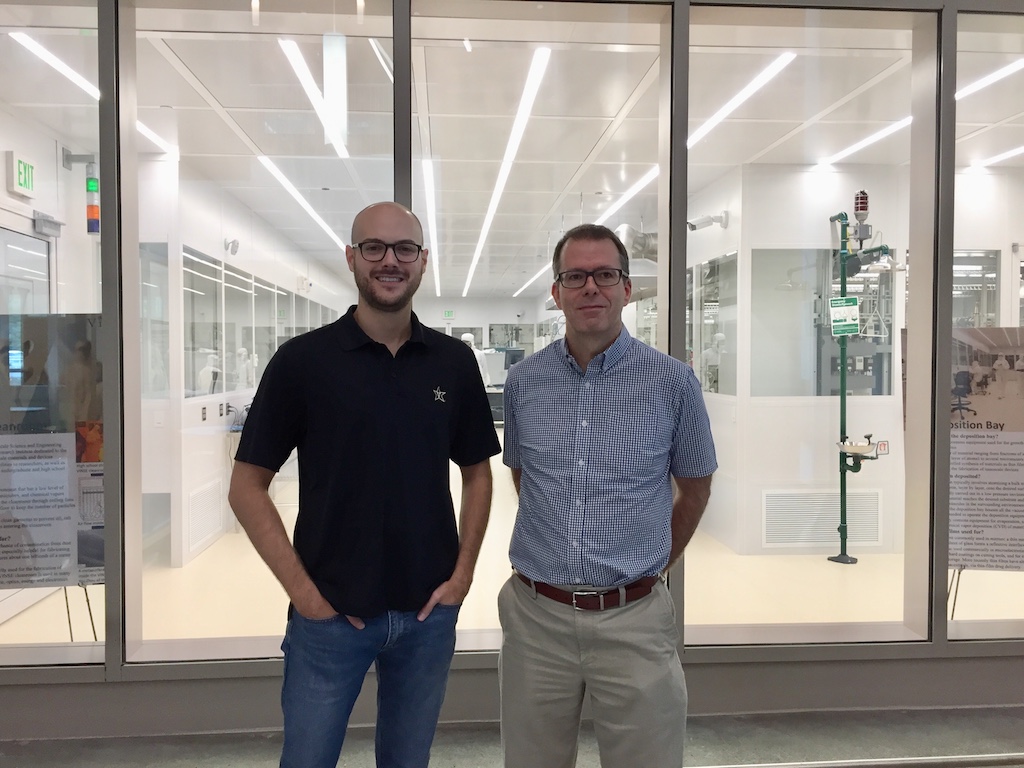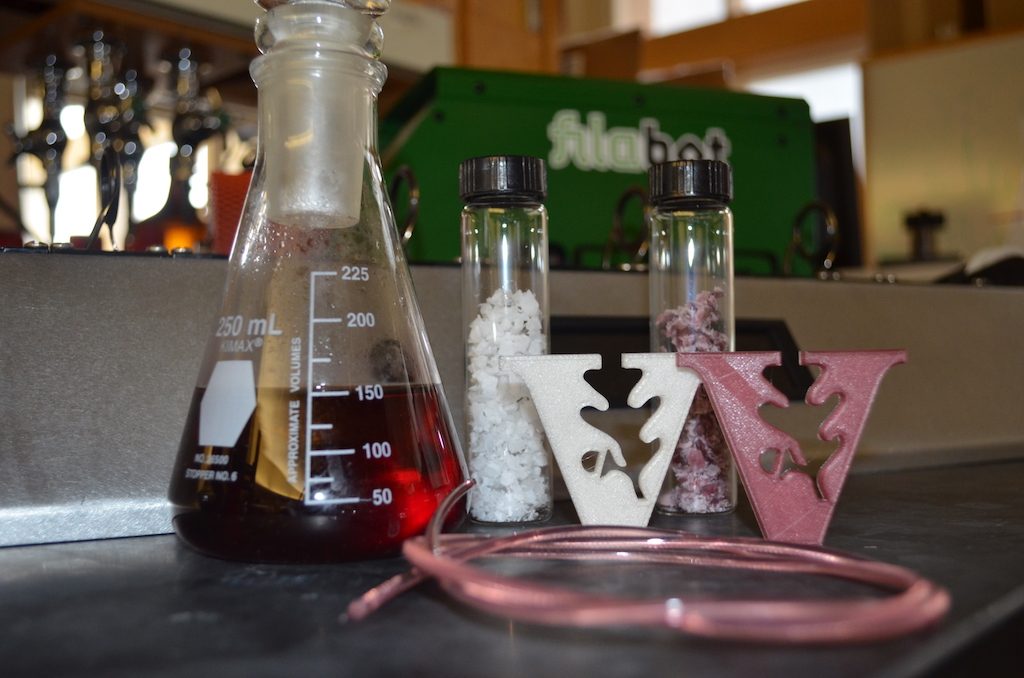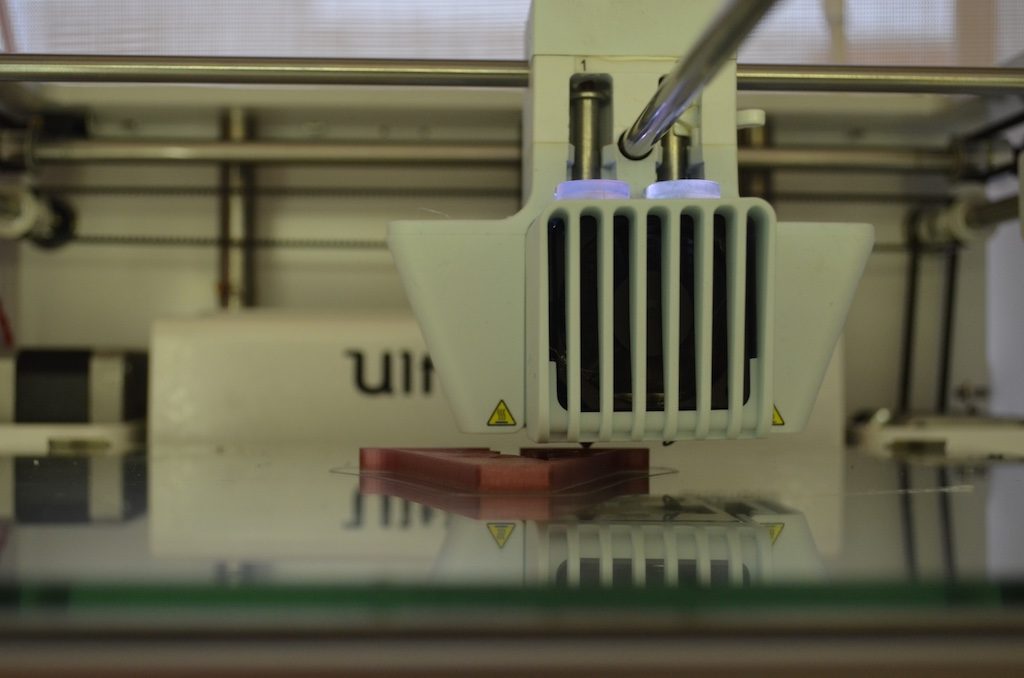3DPrint.com Interviews Cole Brubaker of Halmos Technologies for nanofunctionalized materials for 3D printing
A few weeks ago we read about Cole Brubaker’s fascinating research at Vanderbilt University on nanofunctionalized materials for 3D printing. Together with a team, he had looked into gold nanoparticles and how these could be used to spot defects in 3D prints. The idea to use nanoparticles for quality control in 3D printing was novel and could have very wide-reaching applications in 3D printing. We as an industry are using many different settings and machines to make unique parts and seeing if these parts have been built properly is specifically problematic for 3D printing. Using nanoparticles fo QA and also maybe QI excited us. Furthermore, post 3D printing these parts are tossed into the world, and then what? When do we know when a part has outlived its usefulness and is due to be replaced? Construction and manufacturing could be much safer if we had intelligent materials which told us when they needed to be serviced. Nanotechnology was also a very interesting area for us especially since we believe strongly in nanoprinting and the value-add that this will create for a more optimized world. Another hype area is IoT which wishes to make the whole world smart by adding sensors to everything. What if there was a cheaper way? What if you could harness 3D printing and nanotech to have the part be your sensor and your display? What is nanotech and 3D printing could make simple cost-effective parts that would function in the real world while keeping us updated as to their usefulness? We decided to interview Cole Brubaker and were excited to discover that he is now working on a startup Halmos Technologies to commercialize what he discovered at Vanderbilt.

Cole Brubaker and his Phd advisor at Vanderbilt Kane Jennings.
You’ve completed your PhD and are now working in a business. Are you commercializing one of your inventions? Why this one?
“I will be finishing up my PhD in the next few months, and am excited to continue working on the commercialization of new, functional materials for additive manufacturing with my company Halmos Technologies. One of the largest hurdles facing additive manufacturing and its widespread adoption right now is that of quality control. How can we ensure that a part was printed exactly as it was designed? With the nanofunctionalized materials I have developed during my time at Vanderbilt University, I believe that the ability to quickly and nondestructively inspect parts and materials for defects and missing print layers will be a paradigm in the world of 3D printing. Ensuring quality control will help provide a sense of safety and security in 3D printed parts in its continued adoption across a number of fields and uses.”
What kind of business is it?
“The business will be focused around the production of functional materials for 3D printing and additive manufacturing applications. By focusing on material design, new materials with enhanced material behaviors compared to the traditional PLA and ABS plastics can be developed. This will open the door for a number of new and exciting products and devices that can be constructed with 3D printing.”
We found your research really interesting, the idea to add nanoparticles to a part in order to enable a visual identification of manufacturing defects. Could an approach like that be able to also indicate when a part is end of life?
“Looking forward, the ultimate goal of this technology is to develop novel ‘smart’ materials and parts that are capable of self reporting damage and wear. This would include providing an indication of when a part or structure Is nearing the end of its useable life, or is in need of repair. Ideally we will be able to design materials to provide in situ material state awareness throughout its useable lifespan.”
Could it indicate when an aerospace part has had too much strain or UV?
“Stress and strain monitoring is one application that I am very interested in exploring. By extending the ideas and concepts I have developed with our previous work, the ability to nondestructively, and visually, inspect structures for strain, or other mechanical insults, arising during normal operating procedures and use is a main focus of this technology going forward.”
It is easy to see that this has applications in monitoring bridges or craft. What are other applications possible?
“There are a number of relevant applications this technology could be used for, beyond just civil infrastructure and aerospace components: biomedical implants, tools and molds, prototypes, energy, etc. Nanomaterials have the potential to positively impact a wide range of fields and uses, by enabling 3D printed parts with new material behaviors and responses.”
The UV-Vis spectrophotometer meant to detect the flaws and “read the parts” seems expensive, however. Would other scanning technologies let us have different results with the same approach?
“Right now, this technology is still at a laboratory scale demonstration, which Is why we are using the UV-Vis spectrophotometer to inspect the as-printed parts for detects and flaws that occurred in the manufacturing process. There are a number alternative, handheld optical inspection devices that can be used to monitor and inspect for defects and damage in the field. Ideally, a system which could be inspected and qualified using nothing more than the standard smartphone camera would be the ultimate goal for the technology; enabling rapid inspection at any given moment in the palm of your hands.”

3D printed parts with embedded nanoparticles.
Could you do the same with magnetic particles for example and get much cheaper to scan part?
“Gold nanoparticles are just one example of the types of additive that we can use with 3D printing and additive manufacturing applications. We selected gold nanoparticles due to their flexibility in synthesis, design procedures, as well as the ability to functionalize the surface of the gold nanoparticles to enable additional sensing and inspection capabilities. The same approach could be extended to a wide variety of nanomaterial systems, such as magnetic particles, based on the desired use of the material. We have also demonstrated the ability to incorporate quantum dots within the 3D printing process to fabricate fluorescent materials and displays, where the same approaches can be extended to a variety of material systems.”
There is a lot of hype around nano. Do you really feel it will change a lot?
“Nanotechnology is booming. The number of relevant applications and uses of nanotech seems to be growing daily, and I don’t see it slowing down anytime soon. Nanotechnology is so appealing because of the unique material properties that are enabled at these reduced length scales. By changing the relative size and material composition, nanotech with enhanced mechanical, thermal, optical and electrical properties can be developed. And using the approach we have developed, our goal is to bridge the gap between the nano and bulk scale, by enabling larger scale 3D printed parts and structures with the enhanced material behaviors enabled by nanotechnology. This would be a true paradigm shift in the world of additive manufacturing.”
Are there dangers as well?
“One thing that is important to consider is the impact that functionalization has on the overall material properties, and understanding how the material behaves following the inclusion of nanomaterials, or any other additives, to the host polymer.”
Your research really required an interdisciplinary team of chemists, engineers, civil engineers, biomedical engineers and more. At science’s boundary is this kind of collaborative work between fields more a requirement nowadays?
“I definitely see science moving more towards an interdisciplinary approach, not only in academia but also in industry. When you bring together a group of people each with different backgrounds, experience, training and knowledge, there is really no limit to the things that can be accomplished. It gives everyone a fresh perspective and new ways of thinking about problems and questions that you may have not otherwise considered. Working across academic boundaries and bringing together these groups on interdisciplinary researchers and thinkers will continue to help open doors, and help push forward additive manufacturing and 3D printing.”
Has scientific research gone from an individual affair to more of a team sport?
“Research has definitely become a team sport. Even in additive manufacturing, the field as a whole is a perfect example of that transition. Mechanical and electrical engineers are constantly interfacing with chemists and material scientists to design and optimize systems and materials to arrive at a common end goal: the ability to rapidly manufacture functional parts and structures.”

3D printing functional nanoparticle embedded materials for quality assurance and quality inspection on an Ultimaker 3
You also work on quantum dots. I know we’re going to be hearing much more about them. What do I need to know about quantum dots?
“Quantum dots are semi-conducting nanoparticles that have unique optical and emissive characteristics that can be tuned according to their size and material composition. It is this emissive characteristic of quantum dots that most people are excited about. They have been used for everything ranging from solar cells, displays, biological tracking and most recently in TVs that you can buy at your local electronics store. With the development of large-scale production facilities, I think the use of quantum dots are going to become more common in every day applications and uses. Our work with quantum dots in 3D printing is an exciting representation of how we can begin to manufacture and print large scale structures with these tunable optical characteristics enabled through nanotechnology and quantum dots in particular.”
I wouldn’t immediately think of Nashville Tennessee as the place to found a technology startup?
“Tennessee is quickly becoming a hot spot for new startups and tech companies. There are a number of local and state-sponsored programs geared towards helping small businesses succeed here in Tennessee. And even more, just about 3 hours away from Nashville, at Oak Ridge National Laboratory, the Manufacturing Demonstration Facility is one of the largest additive manufacturing and 3D printing research and development centers in the country. Having access to experts in the field within just a few hours drive is an unbeatable benefit to continuing to work with 3D printing in Nashville.”
Subscribe to Our Email Newsletter
Stay up-to-date on all the latest news from the 3D printing industry and receive information and offers from third party vendors.
You May Also Like
Precision at the Microscale: UK Researchers Advance Medical Devices with BMF’s 3D Printing Tech
University of Nottingham researchers are using Boston Micro Fabrication‘s (BMF) 3D printing technology to develop medical devices that improve compatibility with human tissue. Funded by a UK grant, this project...
3D Printing Webinar and Event Roundup: April 21, 2024
It’s another busy week of webinars and events, starting with Hannover Messe in Germany and continuing with Metalcasting Congress, Chinaplas, TechBlick’s Innovation Festival, and more. Stratasys continues its advanced training...
3D Printing Webinar and Event Roundup: March 17, 2024
It’s another busy week of webinars and events, including SALMED 2024 and AM Forum in Berlin. Stratasys continues its in-person training and is offering two webinars, ASTM is holding a...
3D Printed Micro Antenna is 15% Smaller and 6X Lighter
Horizon Microtechnologies has achieved success in creating a high-frequency D-Band horn antenna through micro 3D printing. However, this achievement did not rely solely on 3D printing; it involved a combination...





























